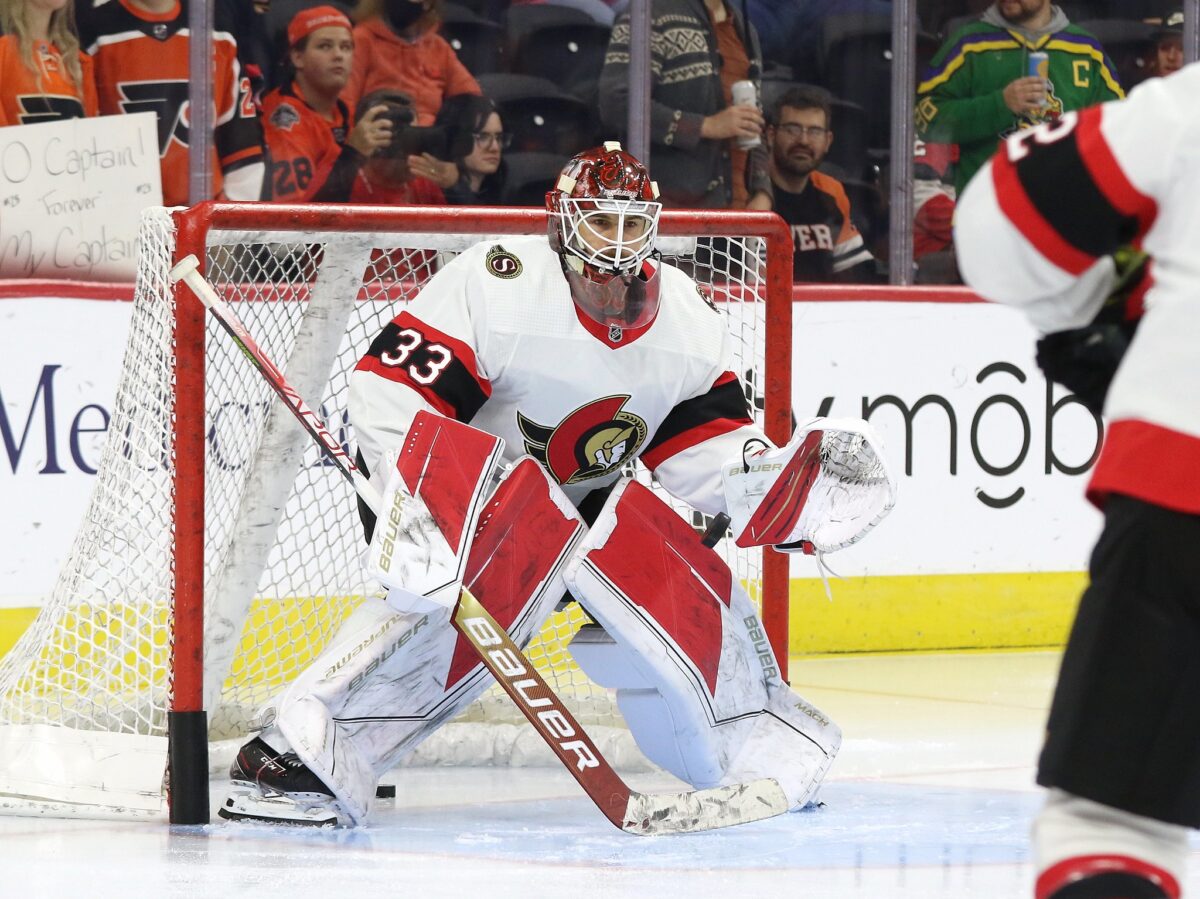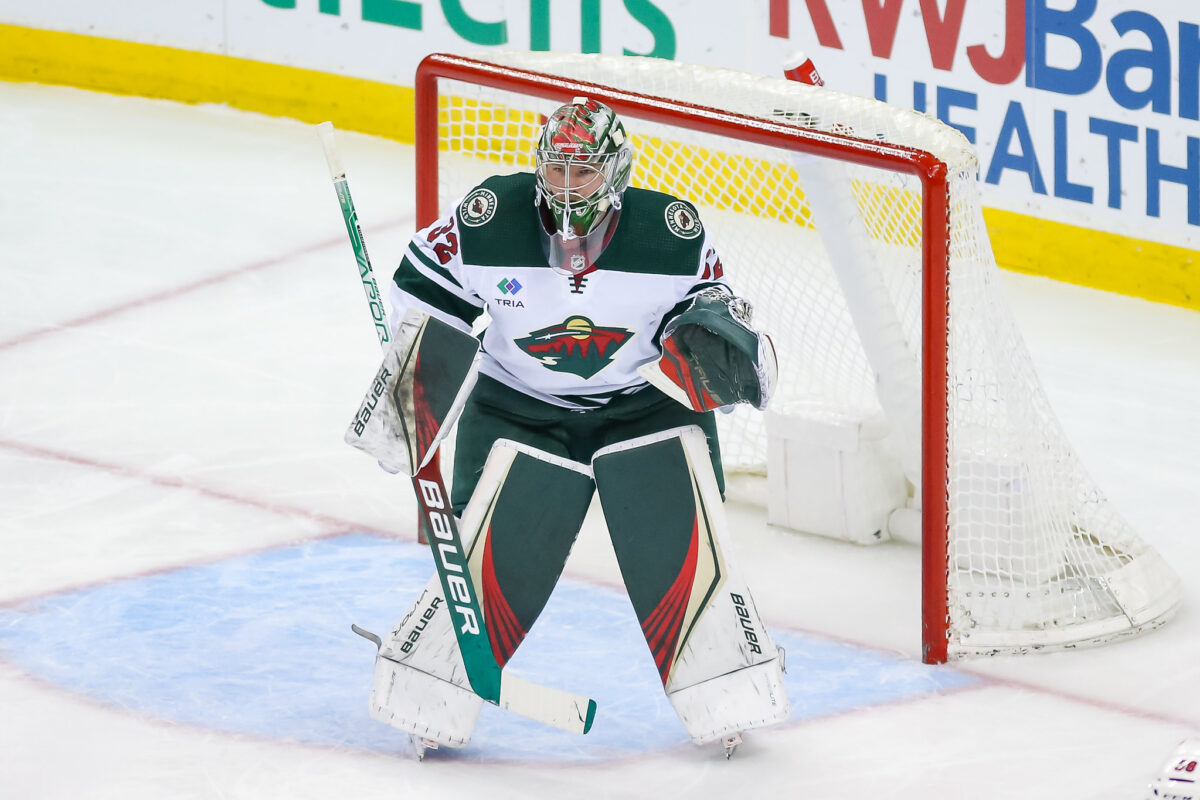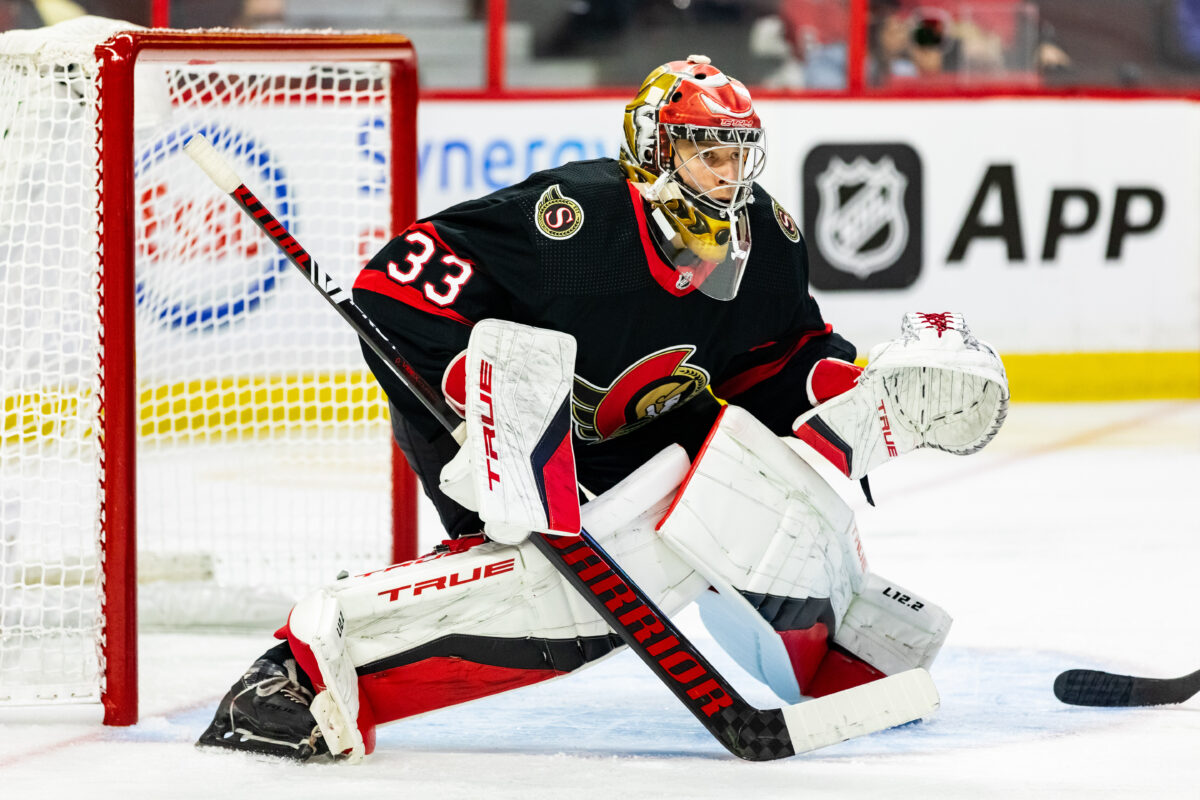Ottawa Senators general manager Pierre Dorion opened the season on the front foot, reworking his roster to a positive reception. The Senators, many people felt at the time, were bound for the playoffs after adding Alex DeBrincat and Claude Giroux to an ever-improving squad.
Dorion was praised for his summer manoeuvrings, rebuilding his reputation after several slow seasons in Ottawa. His decision to restructure the crease raised eyebrows across the hockey world – but the reaction was broadly positive.
The Senators sent injury-prone Matt Murray and his oversized cap hit to the Toronto Maple Leafs on July 12 and traded Filip Gustavsson to the Minnesota Wild in exchange for Cam Talbot just two days later.

Plenty has happened since then, with the Senators falling short in the regular-season, the Wild eliminated from the playoffs by the Dallas Stars, and the Maple Leafs ending their 19-year run of postseason futility.
With that said, it’s the perfect time to revisit the trade that saw Talbot join Ottawa. How should we assess the move one season later?
Why Did the Ottawa Senators Trade for Goaltender Cam Talbot?
With Murray headed for Toronto, the Senators acquired Talbot to complete a tandem with Anton Forsberg. The 35-year-old posted a .911 save percentage (SV%), 2.76 goals-against average (GAA), and three shutouts in 48 starts in his final season with the Wild, demanding a trade – via his agent – once Minnesota opted to extend deadline acquisition, Marc-Andre Fleury.
There were plenty of potential suitors for Talbot, but it was the Senators who struck the deal with the Wild, sending Gustavsson to Minnesota.

“Cam is experienced and provides us with greater goaltending stability heading into next season,” Dorion said at the time. “He was instrumental in helping Minnesota reach the playoffs in each of his two seasons with the Wild. The tandem of he and Anton Forsberg sets us up nicely for the upcoming year.”
By contrast, Gustavsson had just finished a mediocre season in Ottawa, posting a .892 SV%, 2.50 GAA, and two shutouts through 18 appearances. Dorion felt it was time to move on from the former second-round pick and traded the then 23-year-old for a major league veteran.
How Did the Season Unfold for Cam Talbot & Filip Gustavsson?
The Senators were dealt an early blow when Cam Talbot suffered an upper-body injury in training camp, forcing him to miss significant playing time. This setback forced the Senators to claim Magnus Hellberg off waivers to fill the void left by Talbot’s injury.
With Talbot unavailable, the Senators were forced to rely on Forsberg in the early weeks of the season, stretching him too thinly as the team tumbled down the standings in November.
The Wild, meanwhile, enjoyed strong play from Gustavsson, with the Skelleftea-born netminder recording a .933 SV% through five appearances in November. By the end of the season, the team that won the trade became clear:
| Netminder | Appearances | Goals Saved Above Expected Per 60 | SV% | GAA |
| Cam Talbot (OTT) | 36 | -0.022 | .898 | 2.93 |
| Anton Forsberg (OTT) | 28 | 0.330 | .902 | 3.26 |
| Filip Gustavsson (MIN) | 39 | 0.628 | .931 | 2.10 |
| Matt Murray (TOR) | 26 | 0.041 | .903 | 3.01 |
* advanced statistics provided by Money Puck.
While Gustavsson flourished in Minnesota on a team-friendly contract – where he remains under team control as a pending restricted free agent – Talbot laboured in Ottawa and showed limited interest in re-signing with the Senators. As a result, he is expected to walk away from the club as an unrestricted free agent this summer.
What Does the Future Hold for the Ottawa Senators?
After a disappointing season in net for the Senators, it may be time for the franchise to embrace Talbot’s departure and use it as an opportunity to develop young netminder Mads Søgaard.
While Talbot has been reliable in the past, his performance this season left a lot to be desired. With a .898 SV% and a 2.93 GAA in 36 games, it’s clear that the 35-year-old is not a long-term solution for the Senators – who must make a playoff push in 2023-24.
Related: Senators Have Plenty of Options for Goaltending Solution
Forsberg also struggled in net, posting a .902 SV% and a 3.26 GAA as his season was curtailed by devastating knee injuries. With that in mind, the Senators need to look to the future for their goaltending solutions.
That future could be Søgaard, a 21-year-old netminder who was drafted by the Senators in the third round of the 2019 NHL Entry Draft. Søgaard has spent the past two seasons mainly playing in the American Hockey League – where he showed flashes of brilliance.

Søgaard is still a work in progress, but he has the size, athleticism, and technical ability to become a successful goaltender at the highest level. By embracing Talbot’s imminent departure as a free agent and giving Søgaard a chance to develop at the NHL level, the Senators can begin building for the future and laying the groundwork for sustained success.
In other words, Dorion will live to regret his decision to trade Gustavsson for Talbot. The Senators would have been best served by standing pat in the goaltending department.
